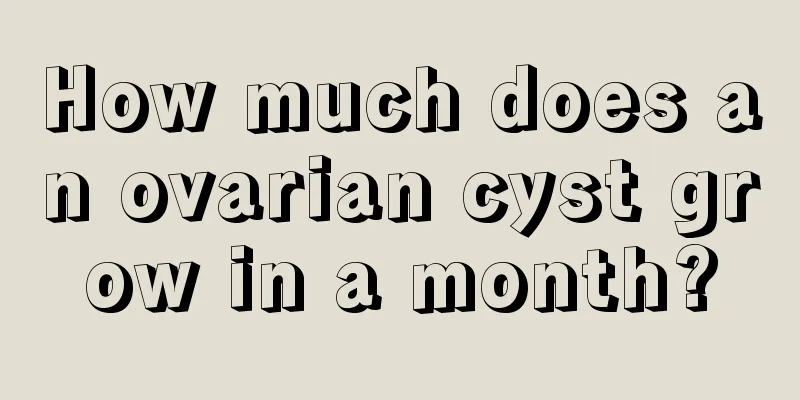Can polycystic ovary be used for IVF?

|
In life, many infertile women are caused by polycystic ovary. So if you want to completely cure infertility, you must first treat polycystic ovary to restore your ovaries to normal. Some women also want to do in vitro fertilization, let the embryo conceive outside the uterus, and then transplant it into the uterus after forming a fertilized egg, which can effectively avoid the ovary. So can polycystic ovary do in vitro fertilization? If the cause of infertility is simply polycystic ovary, you can first use medication to regulate it. If the hormone level cannot return to normal, test tube fertilization will not work. The prerequisite for test-tube fertilization is that the hormone levels in the body must be normal so that normal eggs can be obtained, the fertilized eggs can be transplanted into the uterine cavity, and the embryo can develop. Therefore, whether it is IVF or normal pregnancy preparation, the hormone level of polycystic ovary must be adjusted to normal. So women with polycystic ovary can have IVF. However, before IVF, the hormone level in the body must be lowered and symptomatic treatment is performed. Diane-35 is an option for treatment, which is usually taken for three to six months. After the hormone level returns to normal, ovulation-stimulating drugs can be used to retrieve eggs, and then exogenous hormone drugs can be used to lower polycystic ovary. After the hormone level returns to normal, IVF transplantation can be performed. The main indication for in vitro fertilization is blocked fallopian tubes. Generally, only patients with completely blocked fallopian tubes undergo in vitro fertilization, and in vitro fertilization also requires mature eggs. Polycystic ovary disease is caused by poor ovarian function and the failure of mature follicles to form. If the eggs can mature and be released through treatment, you can become pregnant on your own and there is no need for in vitro fertilization. The success rate of IVF is low. In addition, the treatment of polycystic ovary syndrome is not only about pregnancy. Polycystic ovary syndrome is a very complex disease that has a systemic impact on women's health. The incidence of cardiovascular diseases such as hypertension is 8 times higher than that of normal people, diabetes is 3-5 times higher, and endometrial cancer and breast cancer are 2 times higher. Therefore, once the diagnosis is confirmed, active treatment is necessary. To do in vitro fertilization, the patient must at least meet these conditions: sperm, eggs, and a uterus, because these are the most basic needs for conceiving a baby. For some women who do not have a uterus or have had a hysterectomy, if they want to conceive a baby, they can only do so through third-party reproductive assisted technology, that is, finding a surrogate mother to help give birth. Polycystic ovary in women directly affects their eggs. Polycystic ovary causes insulin resistance and hyperandrogenism. During the in vitro fertilization process, women are prone to excessive response of gonadotropin, resulting in too many activated follicles. What is Polycystic Ovarian Disease in Women? Polycystic ovary syndrome is an endocrine disorder syndrome. The so-called endocrine disorders can be reflected in all aspects of the body. The more common ones include scanty menstruation or even amenorrhea, excessive hair growth, facial acne, pimples, obesity, etc. These symptoms are obvious, and there are also some invisible manifestations, such as chronic anovulation, excessive endometrial hyperplasia, etc. Polycystic ovary disease is a common disease among women. Its most prominent feature is that it affects the growth and development of eggs, and some women may even fail to ovulate. If the ovaries do not ovulate, they will only secrete estrogen and androgen, but not progesterone. Estrogen stimulates the endometrium and causes it to proliferate, while progesterone causes the endometrium to produce a secretory response. If the endometrium is affected by estrogen for a long time without the action of progesterone, the endometrium will become too thick and endometrial disease will occur. For women with severe polycystic ovary disease, the imbalance in estrogen and progesterone secretion leads to the disorder of the entire human hormone secretion system of the hypothalamus-pituitary-ovarian axis, which may also cause lifelong infertility. Women with polycystic ovary syndrome can become pregnant through in vitro fertilization (IVF). The IVF treatment process is the same as that of conventional IVF, but the ovulation induction plan needs to be personalized based on the patient's condition. The ovulation induction effect will be better if it is based on the patient's specific situation. |
<<: Polycystic ovary examination
Recommend
Side effects of emergency contraceptive pills on women
Some women don’t know what effect taking birth co...
Myopia surgery examination report, teach you how to understand 9 important data!
Myopia surgery examination report, teach you how ...
What to do if you have anemia in 4 months of pregnancy
The fourth month of pregnancy is when nutrition i...
I have brown discharge during my period.
When menstruation is about to come, women general...
Can eating "cold rice" help you lose weight? What you need to know about resistant starch
I heard that cooling down cooked rice, steamed bu...
Ventilation with enema after cesarean section
Ventilation after cesarean section means that an ...
What medicine is used for yellow leucorrhea and vulvar itching
Nowadays, many women often suffer from yellow leu...
Can I keep a dog while preparing for pregnancy?
According to the professional advice of doctors, ...
How to prevent sagging breasts during weaning? These skills are important
It is a very skillful job for women to wean their...
Is it better to install a door sill when renovating a house? What is the function of installing a door sill in a house?
We all know that house decoration is a very compl...
I feel swollen after sex
Sex is an important part of our lives, but some p...
Treatment of cervical cysts, Chinese medicine and diet therapy
Cervical cyst is a common cervical disease in wom...
Why is egg fried rice sticky? How to make egg fried rice not sticky?
We all know that egg fried rice is a popular rice...
What kind of ring is best for women to get?
The IUD is a common method of contraception for g...
Pain in the vagina after intercourse
Under normal circumstances, there will be no vagi...









